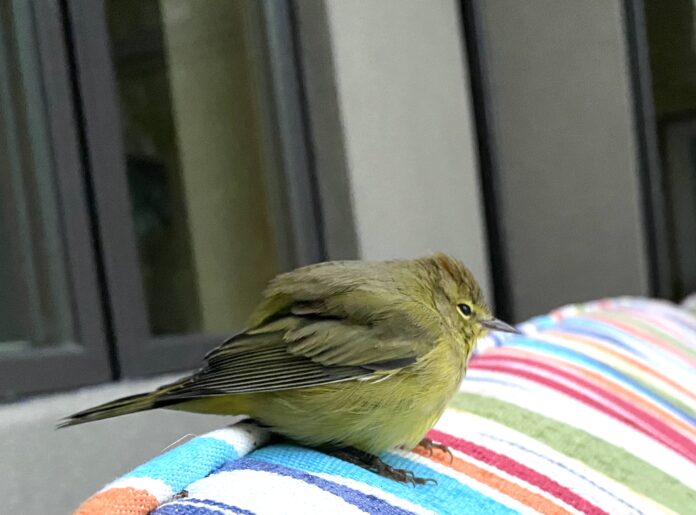BY HARRY WEEKES
I am writing this in the very first hours of fall, what, in the birding world, is a particularly twitchy time.
The double entendre here is that birders in Britain have been dubbed “twitchers” for their penchant to flit about, looking for birds. Then, there is the fact that birds in the fall in the United States (and parts north) all get a bit jumpy as they start thinking about heading south for the winter.
To get a glimpse of the extent of this avian twitchiness, BirdCast is a website where you can find live migration maps of birds in the U.S. that are compiled by aggregating information from weather surveillance radar (we can now determine the difference between clouds and flocks of birds).
By way of example: The last night of summer (September 21 to the wee hours of September 22) had as many as 700 million birds in flight over the United States. You read that correctly—700 million birds. That is a few more than two birds for every U.S. citizen.
Well, I managed to find one of my allotment. Actually, he found me.
Years ago, a small willow emerged in the corner of our yard, not accidentally in the same place as one of the sprinkler irrigation boxes.
In the two decades we have lived in our house, this willow has grown from volunteer shoots, to a 30-foot, multi-stemmed behemoth. This tree literally glistens with insect activity: ants, flies, bees, wasps, aphids, and what seem to be dozens of different kinds of walking and winged critters adorn the stems, leaves, trunk, and every nook and cranny of the plant. All of these plump bodies add up to a kind of high-density protein and butter buffet for a whole series of tiny birds as they move across the landscape fattening up for migration.
Early in the morning, I heard the unmistakable thump of a small body on the window and had a bird in my hand within seconds.
I do what I always do in these cases—I gently pick up the bird and then walk around bobbing and cooing, doing everything I can to cause no further injury while also working to keep the bird conscious and alive.
And that is how I spent my breakfast—one hand lightly cupping a bird as I made lunch, wrote Hilary a note, and otherwise prepared for the day.
From generally stunned, to mildly alert, to sitting upright on my palm, the bird moved in the right direction, before moving in the right direction, which was out of my hand and onto the grass in a short burst of wingbeats.
I picked him up one more time, then perched him on a lounge chair before stepping away, hoping he would have a little more time to recover. This enabled me to take his photo, learn that I had found my first ever orange-crowned warbler, and generally marvel at how this nine-gram bird was currently making its way to as far south as Mexico.
While there is no direct comparison of weight to travel distance, it is fun to consider myself against this bird. I weigh roughly 10,000 times as much, which means my equivalent annual migration journey would take me to the Moon and back over 50 times.
I know, I know… it doesn’t work like that. But just imagine embarking on this kind of journey. The first crisp winds of September would awaken some part of your brain. This would overlap with signals telling you there was less and less light each day. Some unknown magnetic pull from the planet would make you a little jumpier. And then, on a cool, clear night, amidst the twinkling constellations, you would look to the Moon, silently whisper, “Here I come,” and head out for the stars.
Twitchy, indeed.
Harry Weekes is the founder and head of school at The Sage School in Hailey. This is his 53rd year in the Wood River Valley, where he lives with Hilary and two mini-Dachshunds. The baby members of their flock have now become adults—Georgia and Simon are fledging in North Carolina, and Penelope is fledging in Vermont.



